Join us on a journey through Europe’s coastal wonders, where the Mediterranean’s sun-kissed shores and the Atlantic’s rugged cliffs beckon. But beneath the surface, are these havens tranquil retreats or bustling tourist magnets? Let’s uncover the truth.
1. Amalfi Coast, Italy
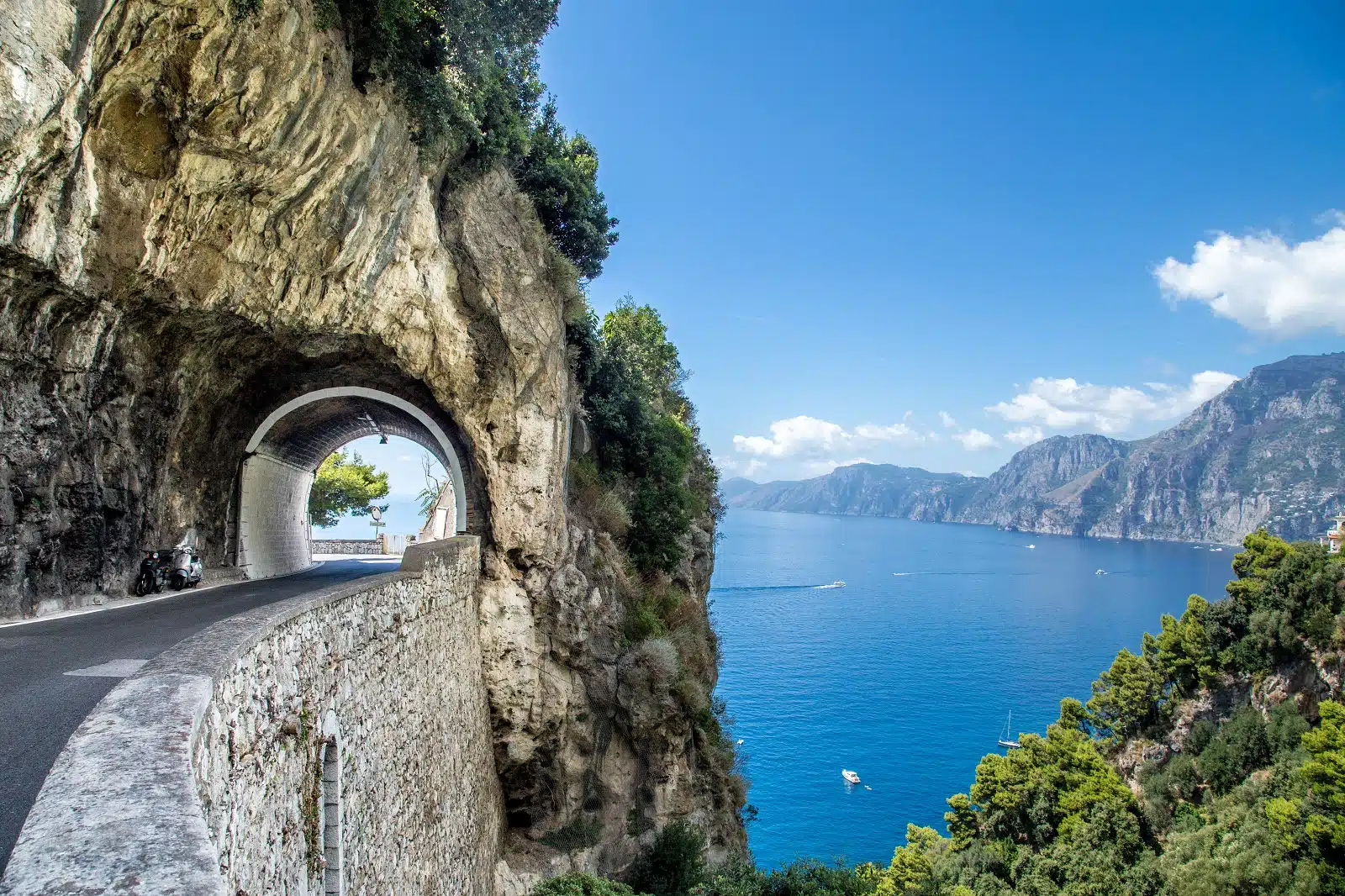
Image Credit: Shutterstock / Alexandree
The Amalfi Coast, a UNESCO World Heritage site, stretches along the southern edge of Italy’s Sorrentine Peninsula in a dazzling display of Mediterranean beauty. This region is famed for its vertiginous cliffs adorned with a patchwork of vibrant villages, terraced vineyards, and lemon groves, all overlooking the sparkling Tyrrhenian Sea. Towns like Positano, Amalfi, and Ravello offer breathtaking views and explore Italian culture, cuisine, and architecture. The coast’s roads offer thrilling drives with panoramic sea views. Though often small and pebbly, the area’s beaches are picturesque and intimate, offering azure waters and secluded spots accessible only by boat or steep paths. The Amalfi Coast is also a culinary paradise, offering fresh seafood, famous limoncello, and exquisite pasta dishes that embody Italian cuisine.
Insider’s Tip: For a unique experience, visit the Fiordo di Furore, a hidden sea fjord with a secluded beach often missed by tourists. This natural wonder offers a peaceful escape and stunning scenery.
When to Travel: The best time to visit the Amalfi Coast is from April to June when the weather is warm, the flowers are in bloom, and the summer crowds have yet to arrive.
How to Get There: The nearest major airport is Naples International Airport. From there, you can rent a car or take a bus or ferry to reach the Amalfi Coast. The journey, whether by road or sea, offers spectacular views and is integral to the experience.
2. Santorini, Greece

Image Credit: Shutterstock / Roman Sigaev
Santorini, the jewel of the Aegean Sea, is a volcanic island known for its dramatic views, stunning sunsets, and whitewashed buildings with blue domes. The island’s unique geography, with cliffs plunging into the deep blue sea, creates a dramatic backdrop for its beaches, unlike any other in Greece. Santorini’s beaches, such as the Red Beach and Kamari, are famous for their unique colors caused by volcanic minerals. The island is also rich in history, with ancient sites like Akrotiri offering insights into prehistoric civilizations. Thanks to the volcanic soil, Santorini’s vineyards produce distinctive wines, making wine tasting a must-do activity. The island’s capital, Fira, and the town of Oia are perched on the caldera edge, offering breathtaking views and a maze of charming streets to explore.
Insider’s Tip: For a quieter, more authentic experience, visit the traditional village of Pyrgos. Less crowded than Fira and Oia, Pyrgos offers panoramic views, charming cafes, and a glimpse into the island’s traditional way of life.
When to Travel: The ideal time to visit Santorini is from late April to early November, with the peak season being July and August. Aim for fewer crowds and pleasant weather for May, June, September, or October.
How to Get There: Santorini can be reached by air from Athens and many European cities, or by ferry from Piraeus, Crete, and other Cycladic islands. The journey by sea offers a stunning approach to the island, revealing its dramatic cliffs and whitewashed villages.
3. Algarve, Portugal
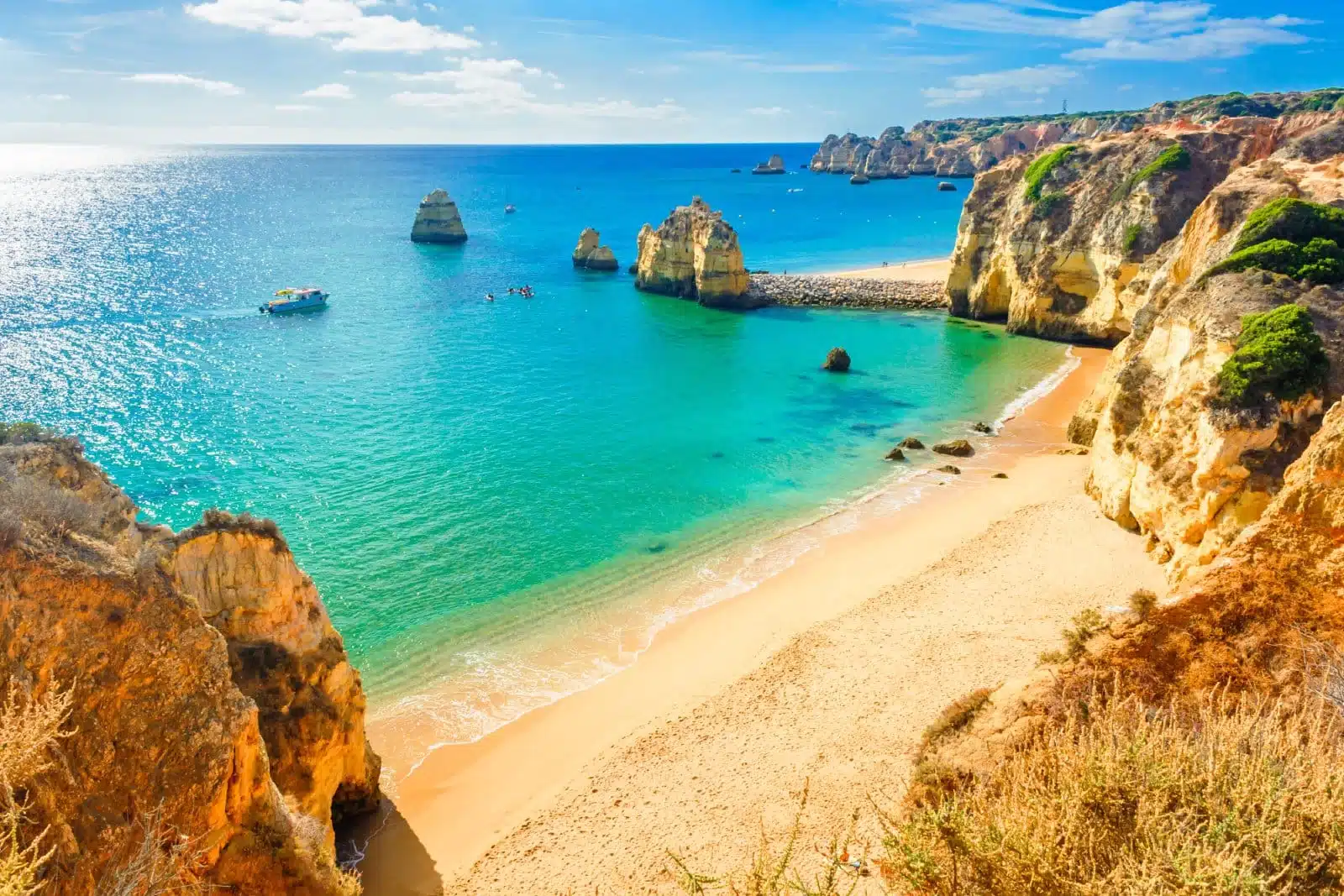
Image Credit: Shutterstock / artem evdokimov
The Algarve, Portugal’s southernmost region, is celebrated for its sunny climate, stunning beaches, and picturesque coastal towns. The region’s coastline is a dramatic landscape of limestone cliffs, sea caves, and golden sandy beaches that stretch as far as the eye can see. Towns like Lagos, Albufeira, and Tavira combine historic charm with lively tourism, offering cultural experiences and modern amenities. The Algarve is also a haven for outdoor activities, from surfing on its Atlantic beaches to hiking along the Rota Vicentina. The region’s cuisine is highlighted, with fresh seafood, Algarvian sweets, and local wines offering Portuguese flavors. The Algarve’s golf courses are among the best in Europe, attracting enthusiasts year-round.
Insider’s Tip: Explore the lesser-known western Algarve for its natural parks and quieter beaches. The Costa Vicentina, part of the Southwest Alentejo and Vicentine Coast Natural Park, offers rugged landscapes and some of Portugal’s best-preserved coastlines.
When to Travel: The best time to visit the Algarve is from March to June or September to November, when the weather is still warm but with smaller crowds. July and August are peak tourist months, with higher prices and larger crowds.
How to Get There: Faro Airport is the main gateway to the Algarve, with direct flights from many European cities. The region is also accessible by train or bus from Lisbon and other Portuguese cities. Renting a car is recommended for exploring the Algarve’s diverse landscapes and hidden gems.
4. Côte d’Azur, France
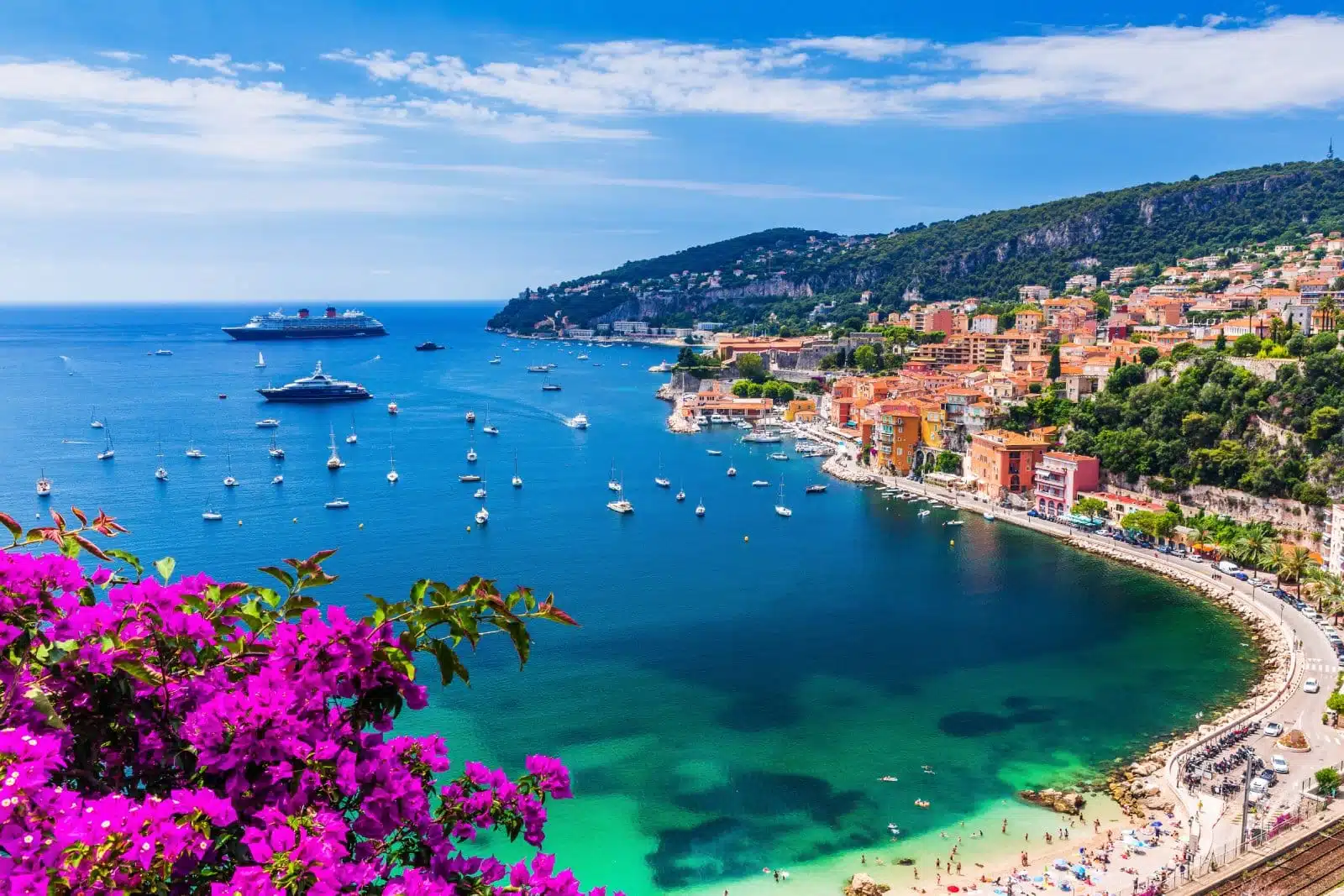
Image Credit: Shutterstock / SCStock
The Côte d’Azur, or French Riviera, stretches along the Mediterranean coastline of southeastern France, embodying luxury, glamour, and breathtaking natural beauty. This region, with its azure waters, pebbled beaches, and lush vegetation, has long been a playground for the rich and famous, yet it retains areas of untouched natural beauty and charming seaside towns. Cities like Nice, Cannes, and Saint-Tropez are synonymous with high-end shopping, world-class art, and vibrant nightlife. The Côte d’Azur is also home to quieter, more secluded spots like the Esterel Massif and the Lerins Islands, offering a respite from the bustle. The region’s art legacy, highlighted by museums dedicated to Picasso and Matisse, adds a cultural dimension to its seaside allure.
Insider’s Tip: Take a hike or drive through the Gorges du Loup for a unique view of the Riviera’s stunning landscape. This lesser-known area offers dramatic scenery, waterfalls, and quiet, picturesque villages.
When to Travel: The ideal time to visit the Côte d’Azur is from May to October, with the peak season in July and August. To avoid the crowds while enjoying good weather, consider visiting in May, June, September, or October.
How to Get There: The Nice Côte d’Azur Airport is the main international gateway, with excellent connections to major cities worldwide. The region is also well-served by the French rail system and highways, making it accessible from
5. Costa Brava, Spain
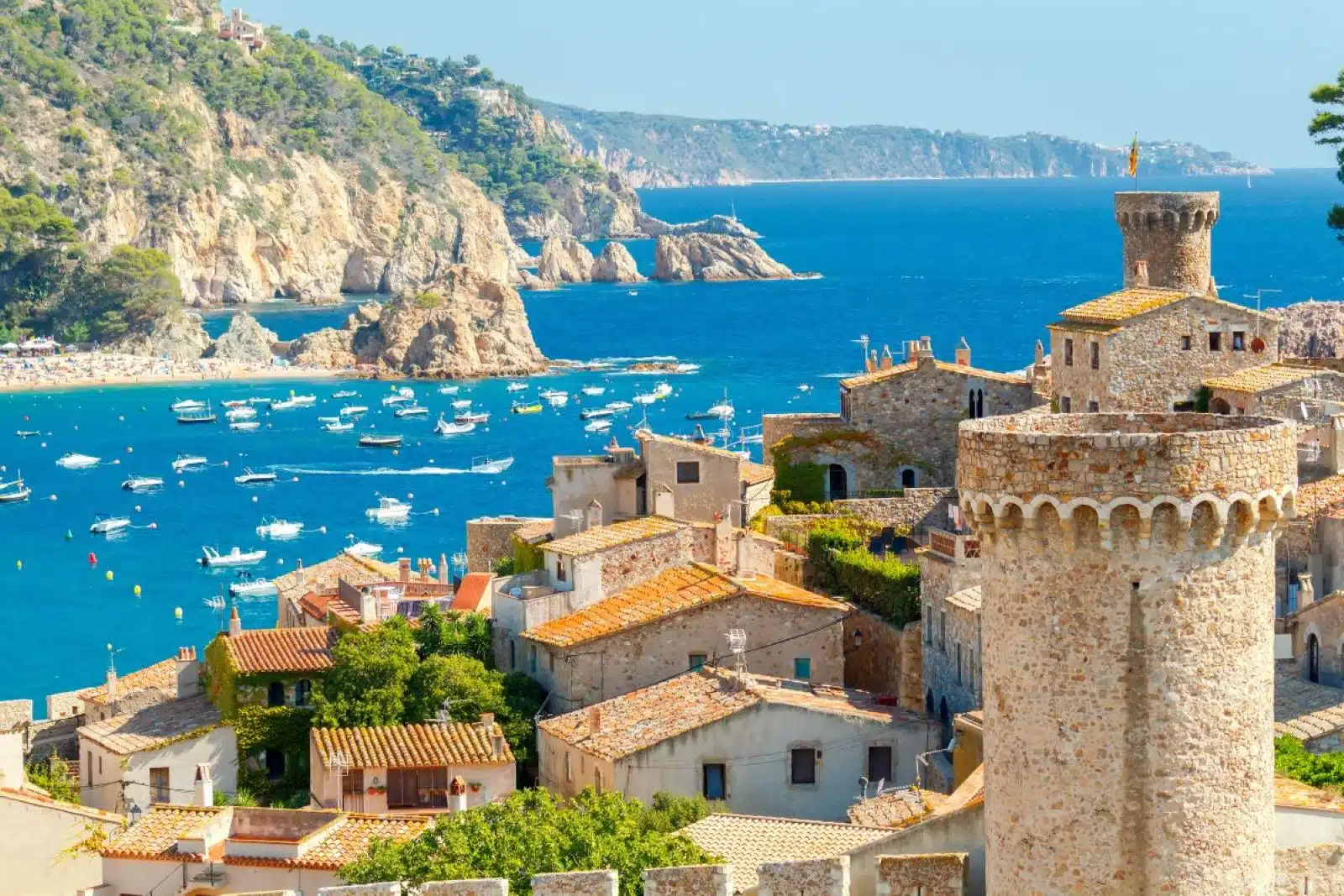
Image Credit: Shutterstock / kavalenkau
The Costa Brava, located in the northeastern corner of Spain, is a stunning stretch of coastline known for its rugged beauty, crystal-clear waters, and sandy coves between cliffs. The region extends from the town of Blanes to the French border, offering a diverse landscape that includes the serene beaches of Calella de Palafrugell and the wild, untouched beauty of Cap de Creus Natural Park. The Costa Brava is not just about its beaches; it’s also rich in cultural heritage, with medieval towns like Girona and Pals and the surreal architecture of Salvador Dalí in Figueres and Cadaqués. The area is renowned for its culinary excellence, with several Michelin-starred restaurants and local dishes that highlight Catalonia’s rich gastronomic tradition.
Insider’s Tip: Visit the medieval village of Peratallada, a lesser-known gem with beautifully preserved stone architecture, artisan shops, and quaint restaurants offering traditional Catalan cuisine.
When to Travel: The best time to visit the Costa Brava is from May to June and September to October, when the weather is pleasant, and the summer crowds have dissipated.
How to Get There: The nearest major airport is in Barcelona, from which the Costa Brava is easily accessible by car, bus, or train. Renting a car is recommended for exploring the region’s more secluded beaches and historic towns.
6. Dubrovnik, Croatia
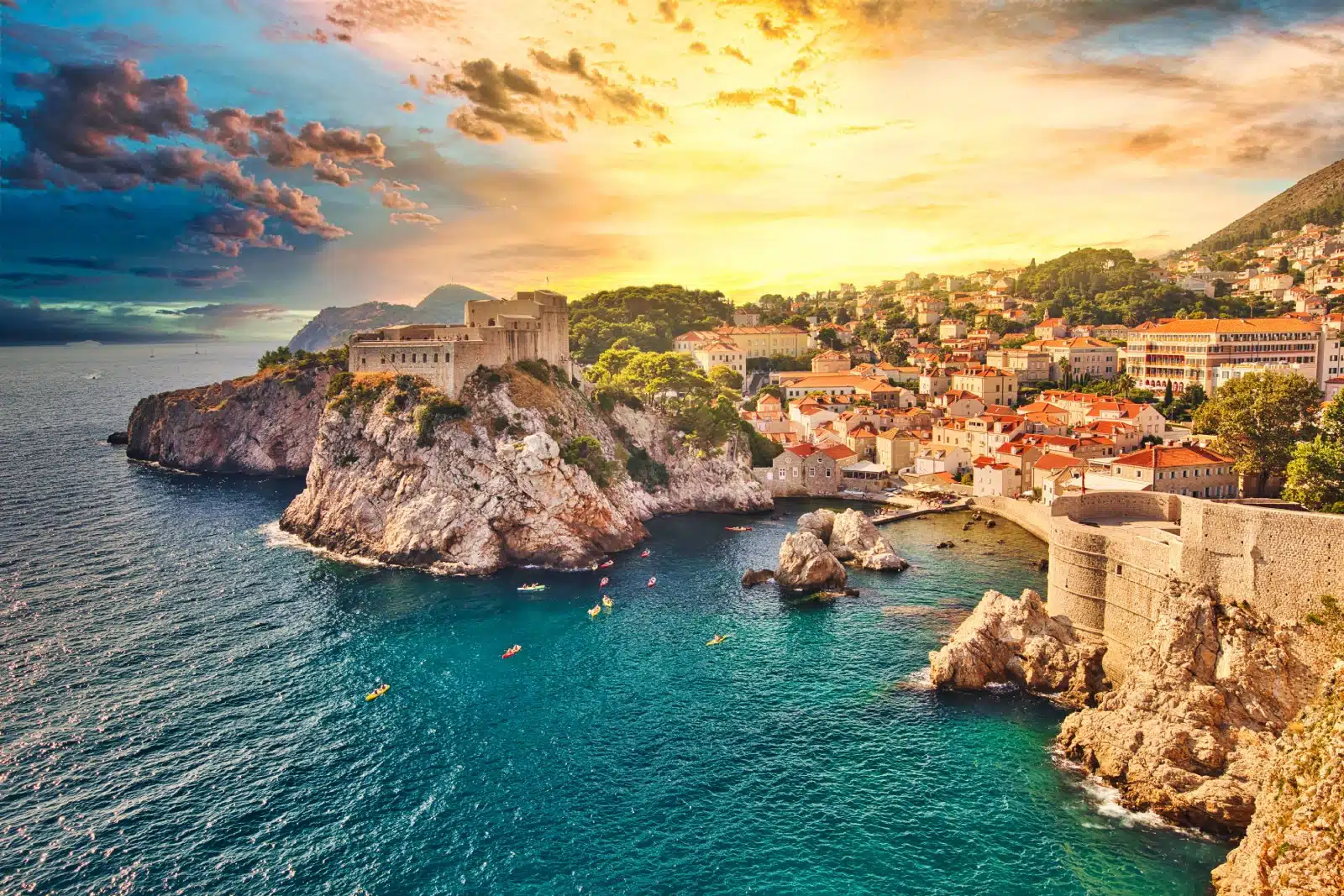
Image Credit: Shutterstock / Benny Marty
Dubrovnik, known as the “Pearl of the Adriatic,” is a stunning city on Croatia’s Dalmatian coast that offers a perfect blend of historic architecture, crystal-clear seas, and rugged natural beauty. The city’s ancient walls, a UNESCO World Heritage site, encircle a treasure trove of Gothic, Renaissance, and Baroque churches, palaces, and monasteries. Dubrovnik’s beaches, like Banje and Lapad, offer beautiful settings for swimming and sunbathing, with the Elafiti Islands just a short boat ride away for those seeking more secluded spots. The city has gained fame as a filming location for “Game of Thrones,” attracting fans from around the world. Despite its popularity, Dubrovnik retains its charm, with vibrant local life and traditions that visitors can experience firsthand.
Insider’s Tip: Escape the crowds by taking a kayak tour around the city walls and nearby Lokrum Island, offering unique perspectives of Dubrovnik and its natural surroundings.
When to Travel: The best time to visit Dubrovnik is in the spring (April to June) and fall (September to November), when the weather is warm, and the city is less crowded than in the peak summer months.
How to Get There: Dubrovnik Airport is located approximately 20 km from the city center, with regular flights from major European cities. Buses, taxis, and airport shuttles offer convenient transportation to the city.
7. Cornwall, England
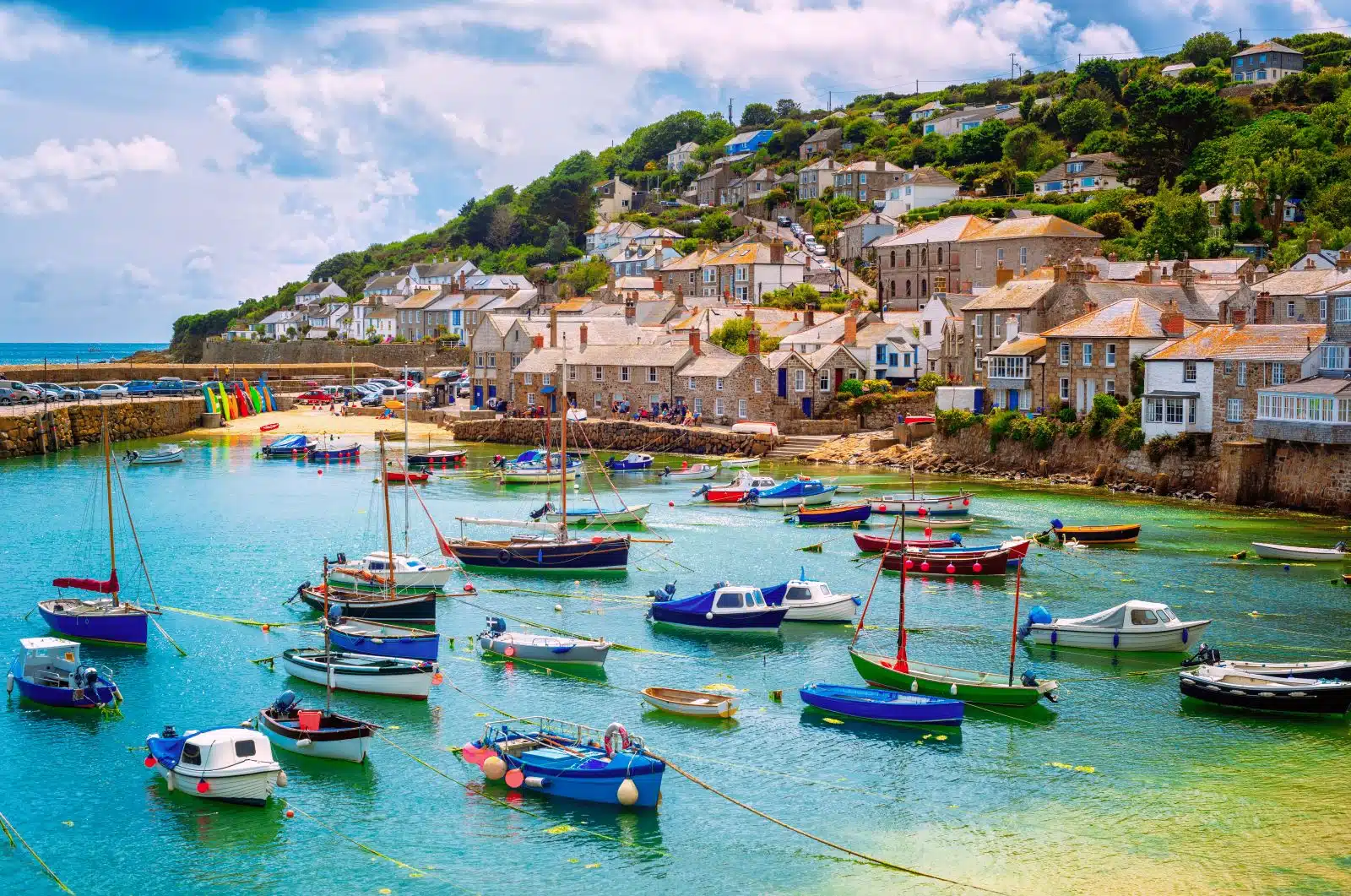
Image Credit: Shutterstock / Boris Stroujko
Cornwall, at the southwestern tip of England, is a picturesque county known for its rugged coastline, quaint fishing villages, and beautiful sandy beaches. Dramatic cliffs, hidden coves, and the expansive moors inland mark the region’s landscape. Cornwall’s maritime heritage is alive in its ports and harbors, where traditional fishing boats are still a common sight. The South West Coast Path offers miles of scenic walks along the coastline, providing access to some of the area’s most stunning views and secluded beaches. Cornwall is also rich in folklore and history, adding ancient stone circles and tales of smugglers and pirates to its mystique. The county’s culinary scene thrives, emphasizing local seafood, traditional Cornish pasties, and artisanal products.
Insider’s Tip: For a unique experience, visit the Minack Theatre, an open-air theater carved into the granite cliff overlooking the Atlantic Ocean. Check the schedule for performances or visit during the day to enjoy the spectacular setting.
When to Travel: The best time to visit Cornwall is from May to September when the weather is warmer and drier, making it ideal for exploring the outdoors and enjoying the beaches.
How to Get There: The nearest major airports are Exeter and Newquay, and train services from London and other major cities are also available. Renting a car is recommended for exploring Cornwall’s more remote areas and coastal villages.
8. Normandy, France

Image Credit: Shutterstock / Igor Plotnikov
Normandy, located on the northern coast of France, is a region with a rich history, stunning landscapes, and a rugged coastline dotted with picturesque towns and beautiful beaches. Known for the D-Day landings of World War II, Normandy’s beaches, such as Omaha and Utah, are steeped in history, with numerous memorials and museums dedicated to the events of 1944. The region is also famous for its culinary traditions, including Camembert cheese, cider, and Calvados brandy. Normandy’s coastline features dramatic cliffs, wide sandy beaches, and charming seaside resorts like Deauville and Honfleur, known for their Belle Époque architecture and vibrant cultural scenes. The region’s interior is equally compelling, with rolling countryside, medieval towns, and the iconic Mont Saint-Michel.
Insider’s Tip: Explore the lesser-known Alabaster Coast (Côte d’Albâtre), where you’ll find the dramatic white cliffs of Étretat, offering breathtaking views and excellent opportunities for hiking and photography.
When to Travel: The best time to visit Normandy is from May to October, with the summer months offering the warmest weather and a variety of festivals and events.
How to Get There: Normandy is easily accessible from Paris by car, train, or bus. The region’s major cities and towns are well-connected by public transportation, but renting a car provides the most flexibility for exploring the coastline and rural areas.
9. Sardinia, Italy
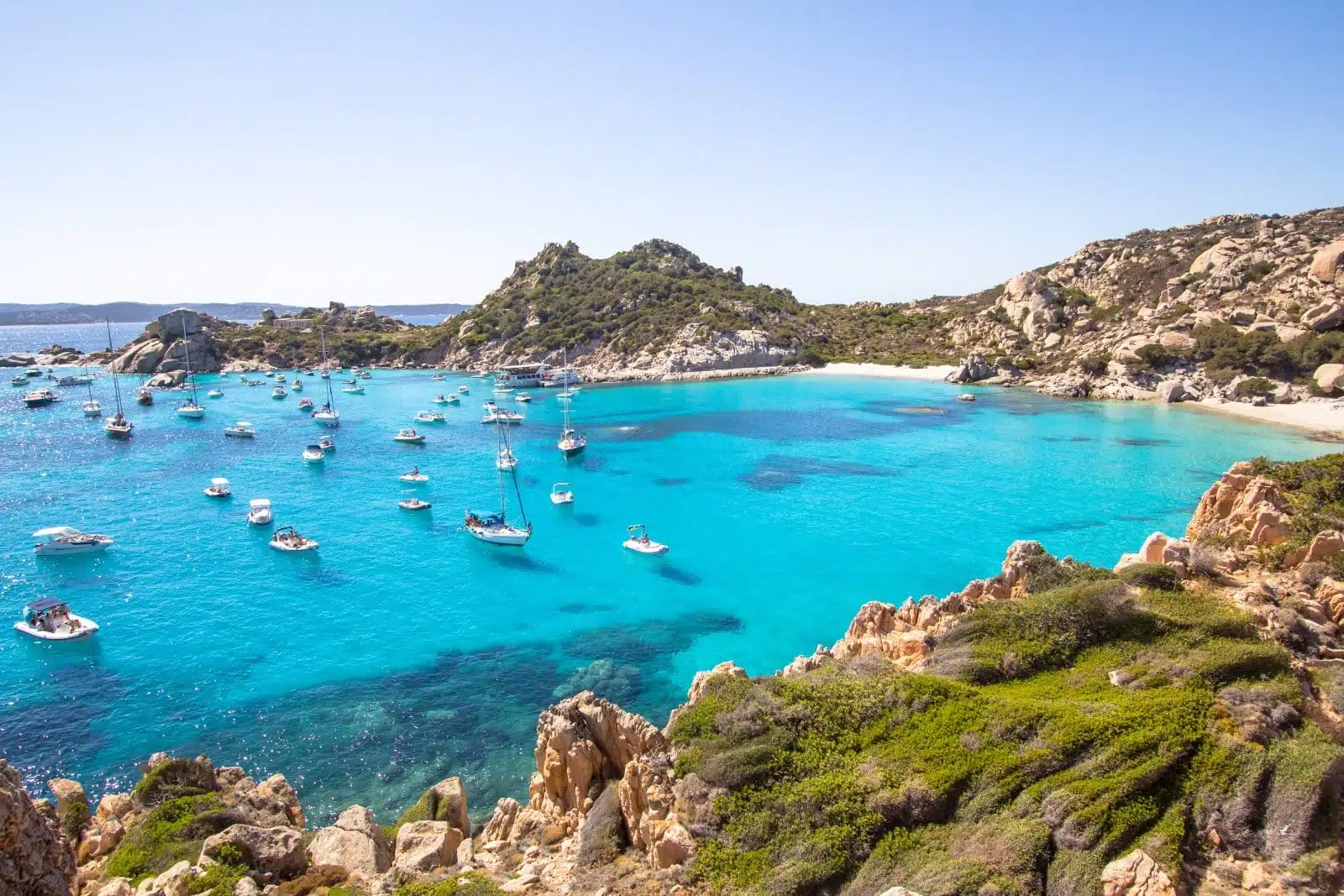
Image Credit: Shutterstock / D.Bond
Sardinia, the second-largest island in the Mediterranean, is renowned for its crystal-clear turquoise waters, white sandy beaches, and rugged interior landscape. The island offers a diverse range of coastal experiences, from the chic resorts of the Costa Smeralda to the wild, untouched beaches of the southwest coast. Sardinia’s rich history is evident in its Nuragic ruins, Phoenician cities, and medieval towns. The island’s interior is a haven for hikers and nature lovers, with the Gennargentu National Park and the Supramonte mountains offering stunning landscapes and outdoor adventures. Sardinia’s cuisine reflects its pastoral and maritime heritage, with specialties like suckling pig, seafood, and unique pastas complemented by local wines.
Insider’s Tip: Visit the archipelago of La Maddalena, accessible by ferry from Palau. This group of islands offers some of the most beautiful beaches in Sardinia, with crystal-clear waters and pristine natural environments.
When to Travel: The best time to visit Sardinia is from May to June and September to October, when the weather is pleasant, and the summer crowds have not yet arrived or have just left.
How to Get There: Sardinia is served by three main airports: Cagliari, Olbia, and Alghero, with flights from major Italian and European cities. Ferries also connect
10. The Azores, Portugal
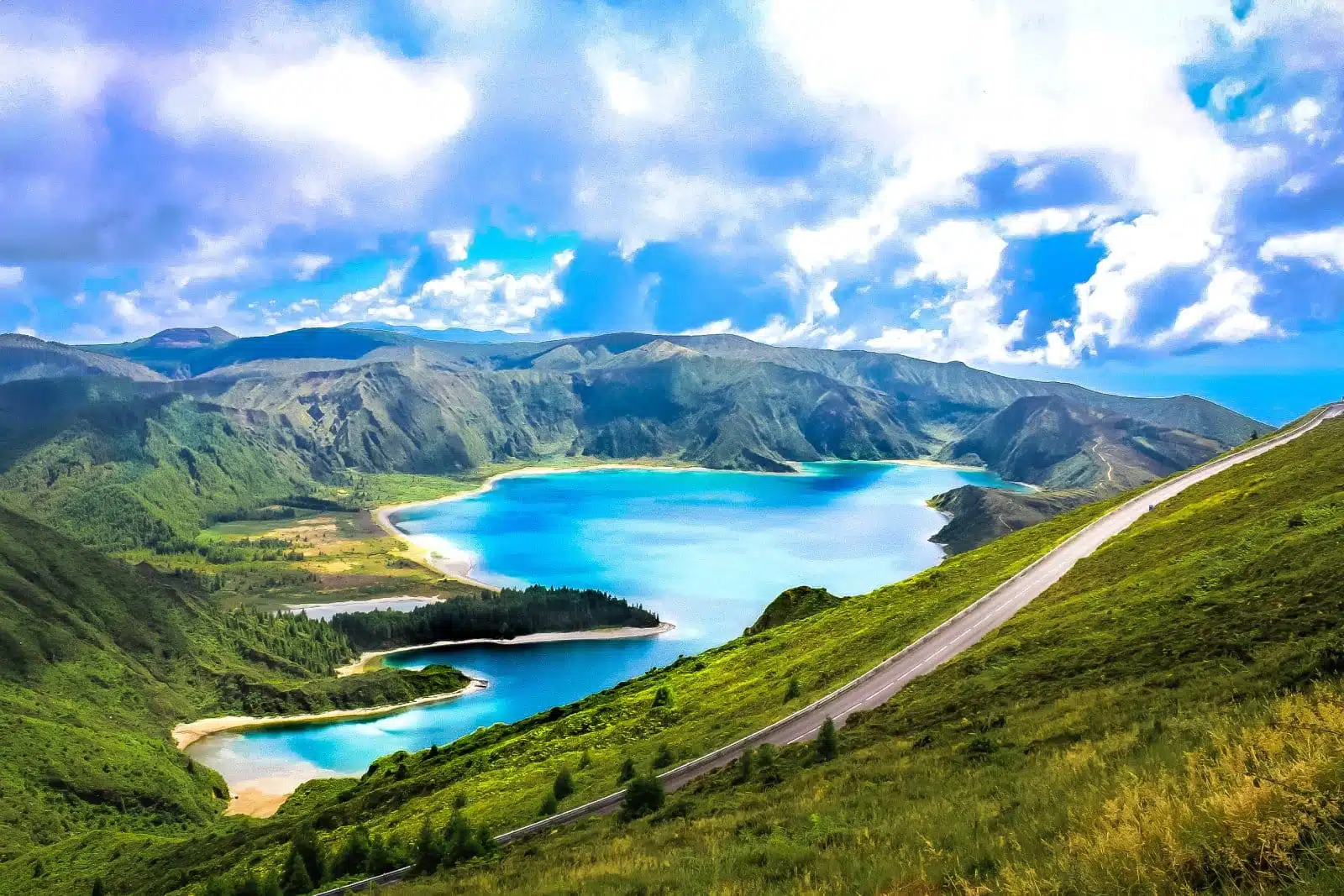
Image Credit: Shutterstock / Angelina Dobreva
The Azores, an archipelago in the mid-Atlantic, is a part of Portugal known for its stunning landscapes, volcanic features, and rich marine life. Each of the nine islands offers unique experiences, from the geothermal springs of São Miguel to the vineyards of Pico. The Azores are a haven for outdoor enthusiasts, with hiking, whale watching, and diving opportunities. The island’s remote location has preserved their natural beauty and traditional way of life, making it a perfect escape for those seeking tranquility and adventure. The Azores’ cuisine reflects the islands’ volcanic soil and Atlantic location, with dishes featuring locally grown fruits, seafood, and dairy products.
Insider’s Tip: Visit the Terra Nostra Park in São Miguel to bathe in geothermal pools surrounded by lush botanical gardens, offering a relaxing and unique experience.
When to Travel: The best time to visit the Azores is from June to September, when the weather is warmest and driest, ideal for outdoor activities and exploring the islands.
How to Get There: The main gateway to the Azores is Ponta Delgada Airport on São Miguel Island, with direct flights from Lisbon, Porto, and some European cities. Inter-island flights and ferries connect the islands,
11. Cinque Terre, Italy
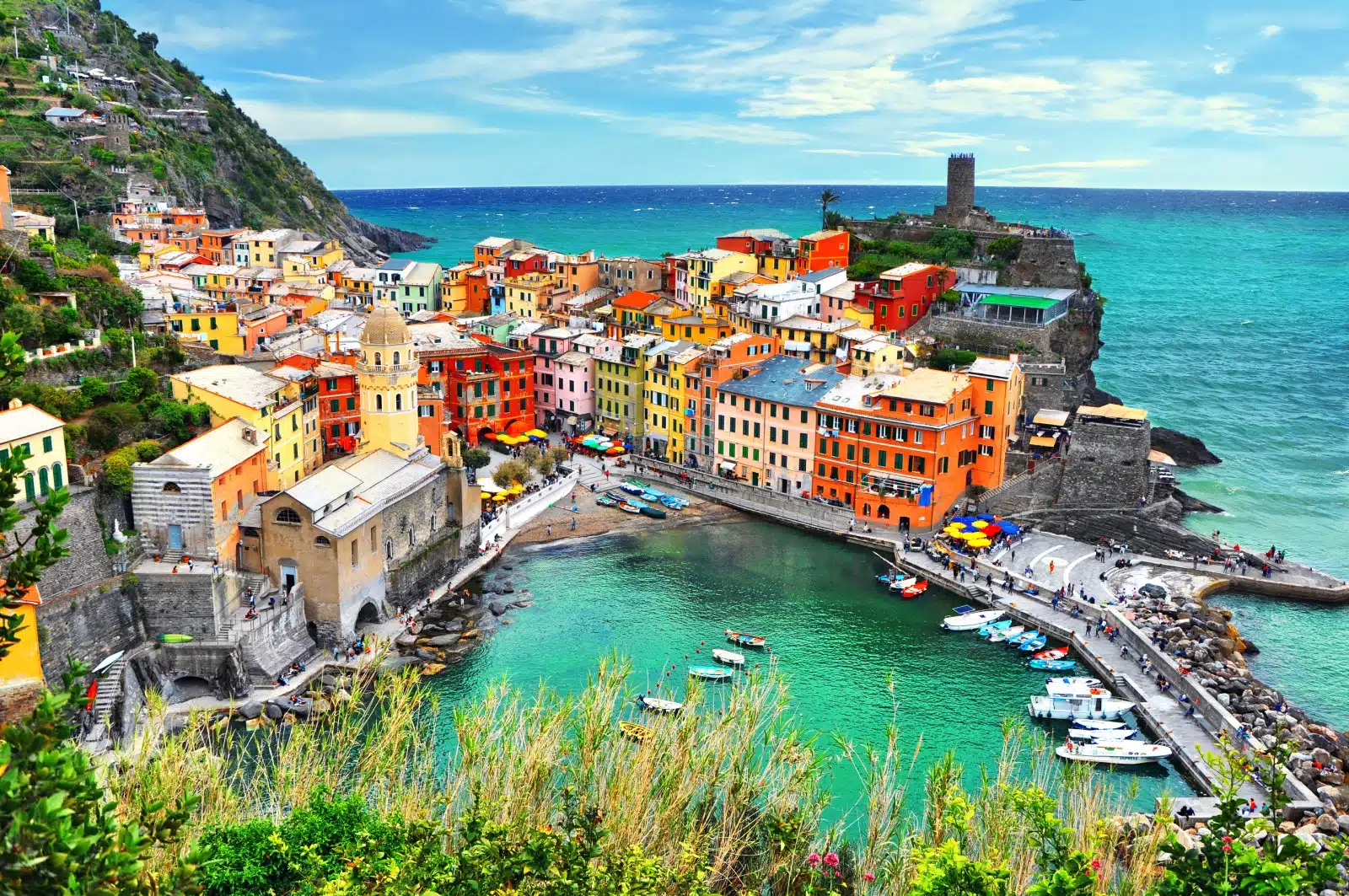
Image Credit: Shutterstock / Minoli
Cinque Terre, a string of five centuries-old seaside villages on the rugged Italian Riviera coastline, embodies the quintessential charm of Italy’s coastal landscapes. With its terraced hillsides, colorful houses, and vineyards that cling to steep terraces, Cinque Terre is a UNESCO World Heritage site that captivates with its beauty and resilience. The villages of Monterosso al Mare, Vernazza, Corniglia, Manarola, and Riomaggiore are interconnected by walking paths, including the famous Sentiero Azzurro, which offers breathtaking views of the coastline and the Mediterranean Sea. The region is renowned for its fresh seafood, pesto, and Sciacchetrà wine, offering a taste of authentic Ligurian cuisine. Cinque Terre’s protected marine area also provides excellent opportunities for snorkeling and diving in crystal-clear waters.
Insider’s Tip: To avoid the crowds and experience Cinque Terre’s authentic charm, consider staying in one of the smaller villages, like Corniglia or Manarola, and explore the area early in the morning or late in the afternoon.
When to Travel: The best time to visit Cinque Terre is from late March to early June and from September to October, when the weather is pleasant and the summer crowds have yet to arrive or have just left.
How to Get There: The nearest major city with an airport is Genoa, but Pisa and Florence are also within reasonable distance. You can take a train from these cities to La Spezia, the gateway to Cinque Terre, and then continue by local train or ferry to the villages.
The Bottom Line

Image Credit: Shutterstock / stockce
Europe’s coastal escapes offer a wide array of experiences, from the sun-kissed beaches of the Mediterranean to the rugged cliffs of the Atlantic. Each destination presents its unique charm, history, and natural beauty, inviting travelers to explore its shores, indulge in its culinary delights, and immerse themselves in the local culture. Whether you seek the tranquility of a secluded cove, the excitement of a seaside city, or the adventure of exploring ancient ruins, these coastal destinations provide the perfect backdrop for a memorable getaway.
As you plan your journey, consider the best times to travel to each destination to enjoy favorable weather and avoid the crowds. Utilize insider tips to discover hidden gems and enhance your experience. With careful planning and an adventurous spirit, your exploration of Europe’s best beaches and seaside towns promises to be enriching and unforgettable.
Featured Image Credit: Shutterstock / kavalenkau.
For transparency, this content was partly developed with AI assistance and carefully curated by an experienced editor to be informative and ensure accuracy.
Tips for Trip Success
Book Your Flight
Find an inexpensive flight by using Kayak, a favorite of ours because it regularly returns less expensive flight options from a variety of airlines.
Book Your Hotel or Special Accommodation
We are big fans of Booking.com. We like their review system and photos. If we want to see more reviews and additional booking options, we go to Expedia.
You Need Travel Insurance!
Good travel insurance means having total peace of mind. Travel insurance protects you when your medical insurance often will not and better than what you get from your credit card. It will provide comprehensive coverage should you need medical treatment or return to the United States, compensation for trip interruption, baggage loss, and other situations.Find the Perfect Insurance Plan for Your Trip
